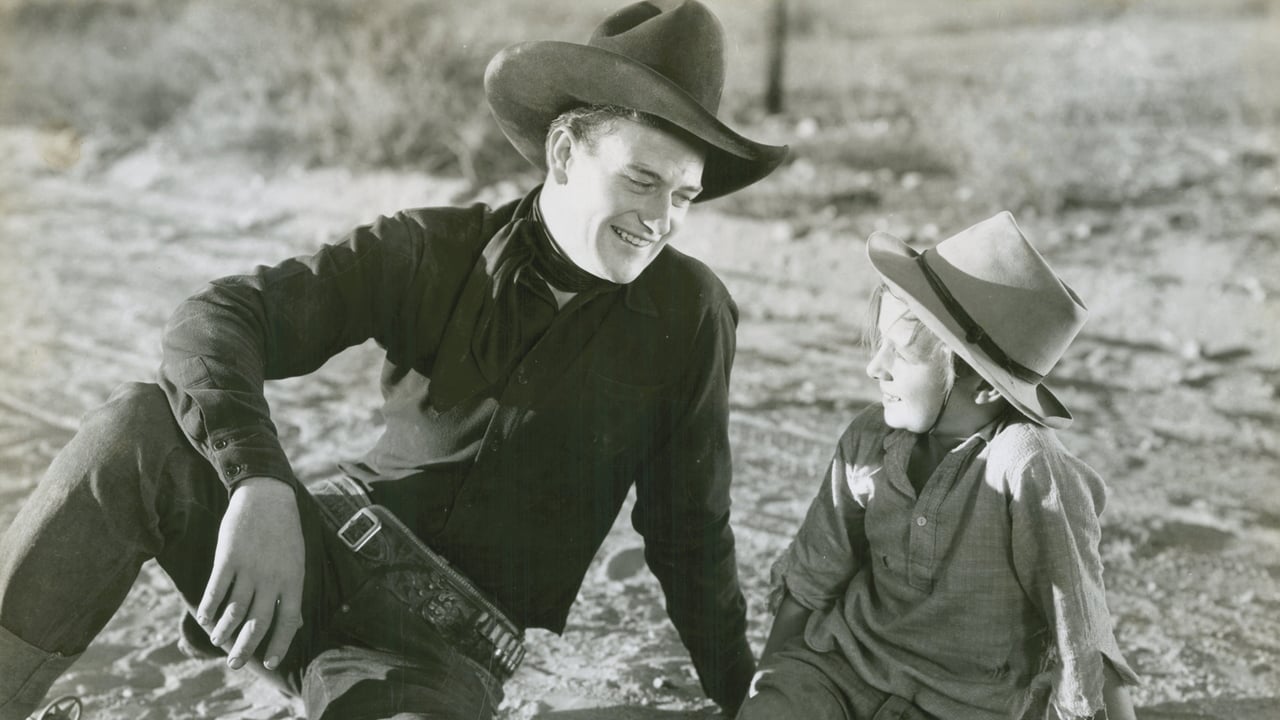

Frequently used story gets a good presentation here in "West of the Divide," and the excellent cast helps ensure high quality.Young John Wayne and grizzled George Hayes start with what I learned in college theater-history classes was called a "feather-duster" scene, where characters -- such as a maid, with a feather-duster -- tell the background of the story, today called "the back story." It's kinda corny, but isn't too damaging.Probably even in 1934 what was about to happen was predictable, but, before that predictable ending, enough happens in between it should hold the viewer's interest. It held mine.When the hero meets the leading lady, there is no poor-writing instant romance. In fact, there is no real contact. It's an unusual boy-meets-girl.That girl is Virginia Faire Brown, who is shown with 74 credits, although she never rose to be a major player and certainly not a star. But she is very attractive, even elegant, with an unusual dark-haired beauty.Her character's father is played by the veteran Lafe McKee. The sheriff is by that veteran, and very talented actor, who didn't, alas, often enough get to show just how good an actor he was, Earl Dwire.Chief bad guy is played by "Loyd Whitlock," who is usually known as Lloyd Whitlock, a very busy man with more than 200 credits!OK, good story, great cast ably performing, lots of riding scenes, and a no-music-track realism that should keep you pinned to your seat. And if you want to see it, there's a good print at YouTube.
... View MoreTed Hayden (John Wayne) and his pal Dusty (Gabby Hayes) find wanted outlaw Gat Ganns dying. Hayden decides to impersonate Ganns in order to get a job as a hired gun for evil rancher Gentry (Lloyd Whitlock). He hopes to find out who killed his father and what happened to his brother. He also meets a girl who was shot in the head (!) by some of Gentry's men. Romance surely must follow.Another John Wayne cheapie western made early in his career. As with most of his other cheapies, this one also features Gabby Hayes and Yakima Canutt. Yakima's stunts are the best part. It's a watchable oater but nothing to get worked up over. Try to catch the version without the irritating electronic score.
... View MoreThis was the fourth of the sixteen Wayne Lone Star series. I must respectfully disagree with those on IMDb who rate it highly. I thought it was one of the worse in the series. It has all the bad elements of the series, bad acting, convoluted and dull plot,anachronisms (telephones, automobiles and women in 1930's clothes). Only the stunt work is excellent, providing the five or six interesting moments.At one point, Wayne turns to the bad guy and says that he's acting like a character out of a dime novel. He's exactly right. The bad guy and the story are stereotypes even for 1933.The series seems to move between films that basically follow straight stereotypical Western stories and films that provide funny and clever twists on the stereotypical stories. This one is played straight and thus only has interest for cinema or Western historians. The other type ("Riders of Destiny" and "the Star Packer," for example) are still quite entertaining 75 years later.
... View MoreJohn Wayne stars as Ted Hayden in this one, lithe young companion of grizzled old George 'Gabby' Hayes, who was just starting to develop into the character now so familiar to Hopalong Cassidy fans. Ted is an orphan, left for dead by the varmints who done fer his paw, and saved from beneath his father's dead body by Hayes' Dusty Rhodes. All this and much more is related to the viewer in the opening scene, a conversation between the pair that is nothing but a huge chunk of exposition that is as lacking in subtlety as it is replete with information. Hayden has returned to his hometown to catch the man with the mad laugh who killed his father, and poses as Gat Ganns, all-round bad egg, who bears more than a passing physical resemblance to our hero.This is a fairly acceptable entry in John Wayne's Lone Star series of films made in the early to mid-thirties. There is quite a diverting storyline, even though the acting is as creaky as usual for these flicks. It's the stunts that stand out in all of the low budget efforts Wayne made in those days, and their success is thanks to stuntman extraordinaire Yakima Canutt. You get the impression as you watch that some real hair-raising risks were taken to capture these scenes and you sometimes wonder whether it was worth it considering the poor quality of most other aspects of the films. Watch out for Canutt standing in for bad guy Lloyd Whitlock, who sports a full head of greying hair, in the fight with Wayne near the end of the film. Canutt had dark hair and a noticeable bald patch, but hack director R. N. Bradbury obviously didn't believe in going to the expense of making even a perfunctory effort to disguise the actors' physical differences. Oddly enough, it's this kind of lack of attention to detail that make the Lone Star films so curiously endearing.
... View More